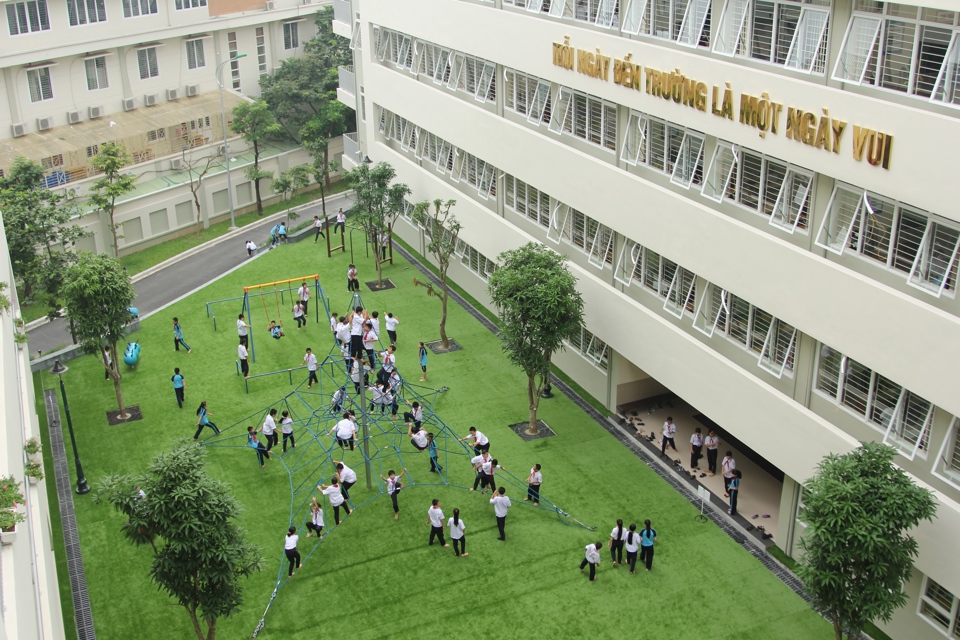
Hanoi plans to relocate some universities to satellite urban areas and build new campuses according to the centralized university model, organized by clusters of academic disciplines and specialties.
| Nghia Tan Middle School in Cau Giay District. Photo: Pham Hung/The Hanoi Times |
The move was mentioned in the draft adjusted Capital Planning until 2045, with a vision to 2065.
As outlined by the Hanoi People's Committee, the capital would have approximately 650,000-700,000 students by 2030, making up 40% of the total students in the Red River Delta.
The city advocates a rational redistribution of the university and college network, intending to relocate institutions with insufficient campuses in the metropolitan area to the periphery. The target is to limit the scale of education in the central urban area, specifically the area from the Nhue River inward to the downtown, to a maximum of 200,000 students.
Educational institutions with more than 2 hectares of land will be allowed to remain, and their facilities will be renovated and upgraded to meet the target of 20 square meters per student. Schools with a long tradition, such as Hanoi University of Pharmacy, Hanoi Medical University, and Hanoi University of Science and Technology, will be targeted for preservation and renovation.
Schools with an area of less than 2 hectares, excluding the aforementioned "special" schools, will be encouraged to relocate outside the central urban area.
The construction of new facilities follows the centralized university area model, aiming to conserve land resources, minimize infrastructure investment costs, facilitate an advanced educational model, and cater to the requirements of training, research, and practical applications. The expected average area per student in these new facilities is around 50-60 square meters.
Vocational training within clusters will be strategically aligned with the nature and functions of the surrounding urban areas. Specifically, those in Son Tay Town will prioritize training in culture, tourism, and the arts, while the Hoa Lac area in Thach That District will focus on high-quality training in basic sciences.
Educational institutions in Phu Xuyen district will focus on training in industries related to applications serving a multi-industry framework, Soc Son will concentrate on economic, trade, and banking sectors, and those in Xuan Mai Town in Chuong My District will specialize in pedagogical industries.
The plan, currently under review by the Hanoi People's Committee, is gathering opinions before finalization for submission to the Government.
This initiative by Hanoi shares several similarities with the draft planning of the higher education institution network until 2030, with a vision to 2050, proposed by the Ministry of Education and Training.
According to the Ministry's vision, the Red River Delta region, centered around Hanoi, will prioritize the training of high-quality, highly qualified human resources linked with scientific research and innovation across key fields. Multiple university clusters will be established on both Ring Road No.4 sides.
The idea of relocating universities from central Hanoi to suburban areas has been on the city’s agenda since the 2010s. However, numerous challenges, including the delay in granting land to schools in the new areas or the ongoing land lease terms in the inner city, have hindered the relocation progress.
This situation strains Hanoi's infrastructure, particularly in the metropolitan area, and affects the timely construction of public works, preschools, and public schools within the city.
At present, the capital is home to nearly 60 universities, most of which occupy less than 10 hectares of land, and three schools with less than one hectare. The average land area per student in these schools remains relatively low, with some inner-city schools having only about 2 square meters per student. This falls short of the current standards, which require higher education institutions to aim for 25 square meters per student.







